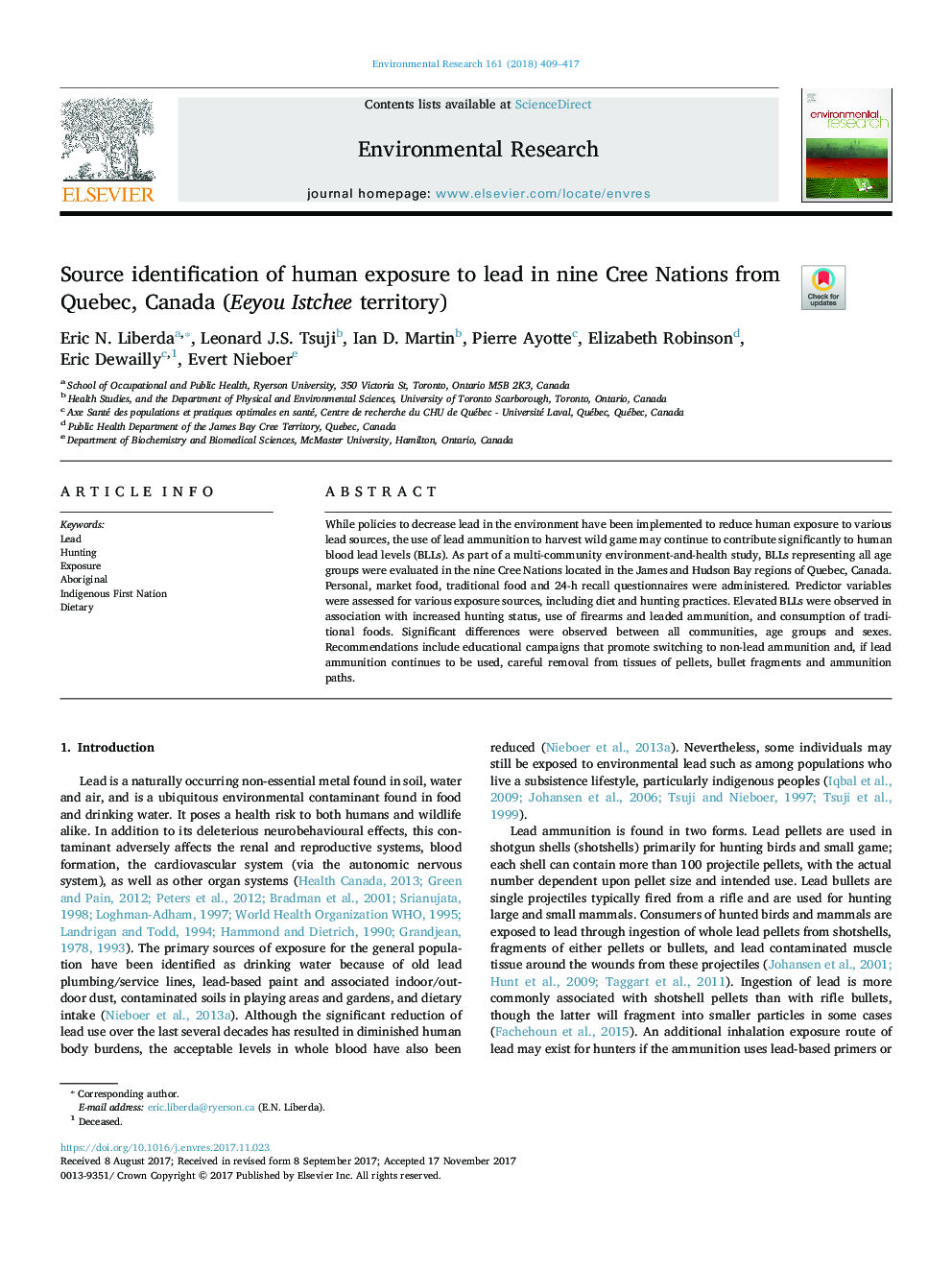| Article ID | Journal | Published Year | Pages | File Type |
|---|---|---|---|---|
| 8869223 | Environmental Research | 2018 | 9 Pages |
Abstract
While policies to decrease lead in the environment have been implemented to reduce human exposure to various lead sources, the use of lead ammunition to harvest wild game may continue to contribute significantly to human blood lead levels (BLLs). As part of a multi-community environment-and-health study, BLLs representing all age groups were evaluated in the nine Cree Nations located in the James and Hudson Bay regions of Quebec, Canada. Personal, market food, traditional food and 24-h recall questionnaires were administered. Predictor variables were assessed for various exposure sources, including diet and hunting practices. Elevated BLLs were observed in association with increased hunting status, use of firearms and leaded ammunition, and consumption of traditional foods. Significant differences were observed between all communities, age groups and sexes. Recommendations include educational campaigns that promote switching to non-lead ammunition and, if lead ammunition continues to be used, careful removal from tissues of pellets, bullet fragments and ammunition paths.
Keywords
Related Topics
Life Sciences
Environmental Science
Health, Toxicology and Mutagenesis
Authors
Eric N. Liberda, Leonard J.S. Tsuji, Ian D. Martin, Pierre Ayotte, Elizabeth Robinson, Eric Dewailly, Evert Nieboer,
